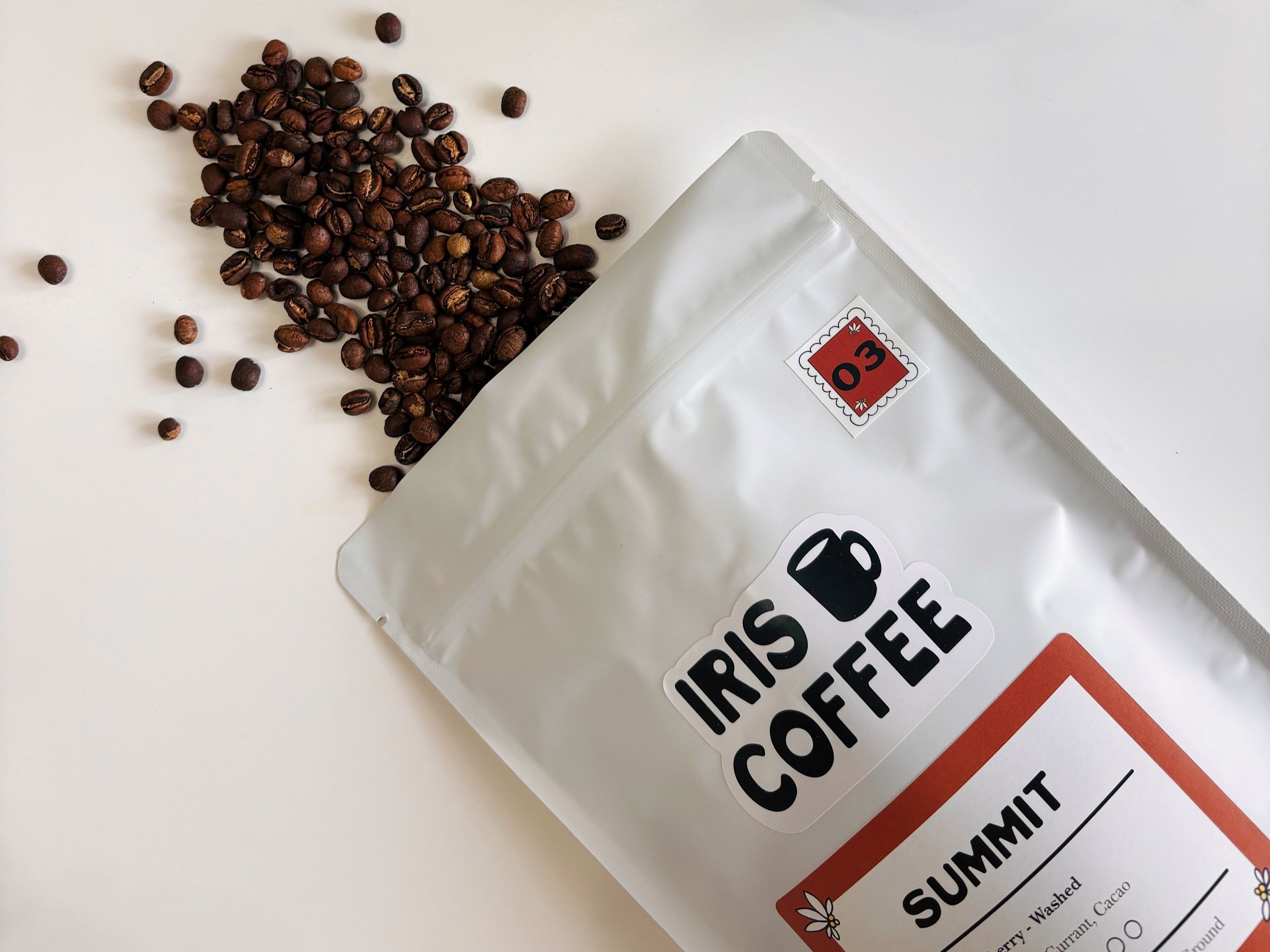One Bean’s Journey
You may love coffee, but how much do you really know about how it goes from farm to cup? Let’s take a little trip along with our coffee beans.
One of our best selling coffees, our Hideaway blend, comes from a few different beans - one of them being a Honduran bean imported by De La Finca. Imagine a lush, green landscape with rows of coffee trees, each one adorned with vibrant red coffee cherries. This farm, owned by third-generation coffee farmer Raul Rodriguez, is located outside a tiny village called Tres Pinos in a national mountain reserve. The mountains provide distinct rainy seasons that help the coffee plants to grow, and drier summers that allow them to sun-dry. This farm is certified organic and a sanctuary for birds (Raul’s favorite is the toucan). Raul is dedicated to not only growing the best coffee possible, but caring for his farmers and pickers as well. His team carefully handpicks the coffee cherries when they’re ripe, ensuring only the best make it to the next stage.
Once they’ve gathered those cherries, it’s time for processing. There are a couple of methods used to process coffee, but this bean uses the “washed” process. The freshly-picked cherries are pulped to remove the outer fruit, and then soaked in water to ferment. This helps remove the mucilage, the layer under the fruit, and reveals the green coffee beans inside. After that, the beans are dried under the sun (thanks to hot Honduran summers) until they reach the perfect moisture level.
Next, the beans are hulled to remove their parchment layer, then sorted by size and quality. and then packed up to be shipped off to roasters around the world. This is where we come in and the magic really happens! After the coffee arrives in its signature burlap bags, we unpack it and store in our little roastery space. We use a fluid bed (air) roaster, roasting the beans at high temperatures using hot air to evenly heat each one. The roasting process takes these beans from green-ish to yellow, orange, and finally the brown beans you see! During this process, the beans lose much of their original moisture content, and eventually begin to “crack” during a process called the Maillard reaction, which occurs near the end of our roasting cycle. We usually complete roasting shortly after the first crack, but darker roasts will continue and crack again. Before our Hideaway beans reach their second crack, they are dumped out of the roaster into a cooling tray and inspected for any defective beans.
We let these beans cool, then they sit on our shelves for a couple days in a process called de-gassing. This gives the beans some time to release carbon dioxide (this builds up during the Maillard reaction while roasting), which is then replaced by oxygen. If coffee isn’t given enough time to degas, your cup will taste less balanced - sometimes even sour - so this step is vital to our production process. When the beans are ready, they’re packaged up into bags with valves so they can continue to degas, and put on our shelves or shipped out to your home! From there, it’s up to you how to prepare your coffee.
We can grind your beans before you take them home, but if you want maximum freshness, we recommend grinding immediately before preparing your cup of coffee. Then whether you’re using a French press, pour-over, Aeropress, espresso machine, or even cold brewer, our beans are bound to give you that boost you need in the morning. We know as coffee lovers ourselves that once that sweet, nutty, chocolatey aroma fills the air, you can hardly wait to take your first sip.
And finally, there it is—your hot (or maybe cold) cup of coffee, ready to be enjoyed. So sit back, take a moment, and savor the rich flavors and long journey that brought this delightful drink from the Raul’s farm in Honduras to your cup!


